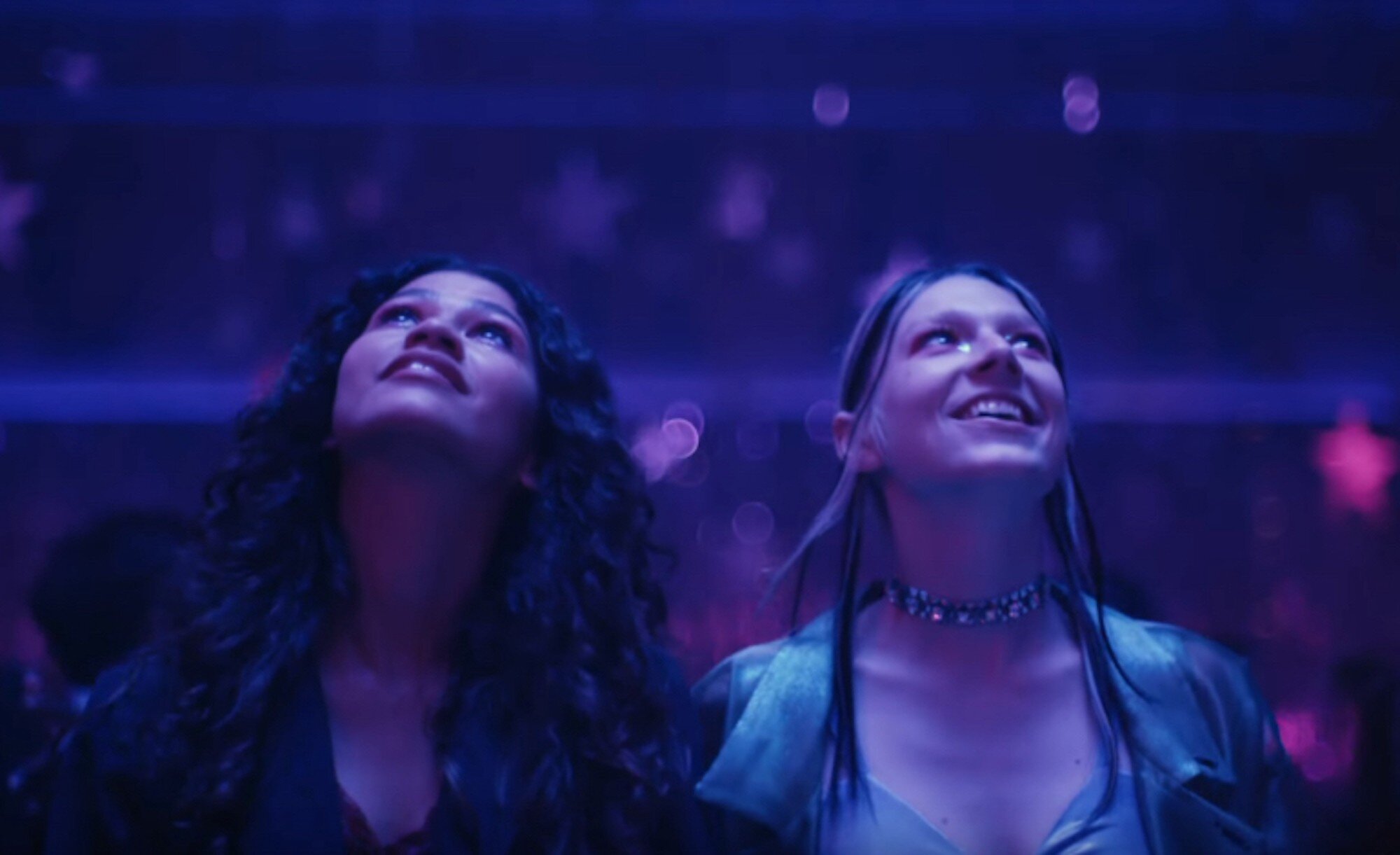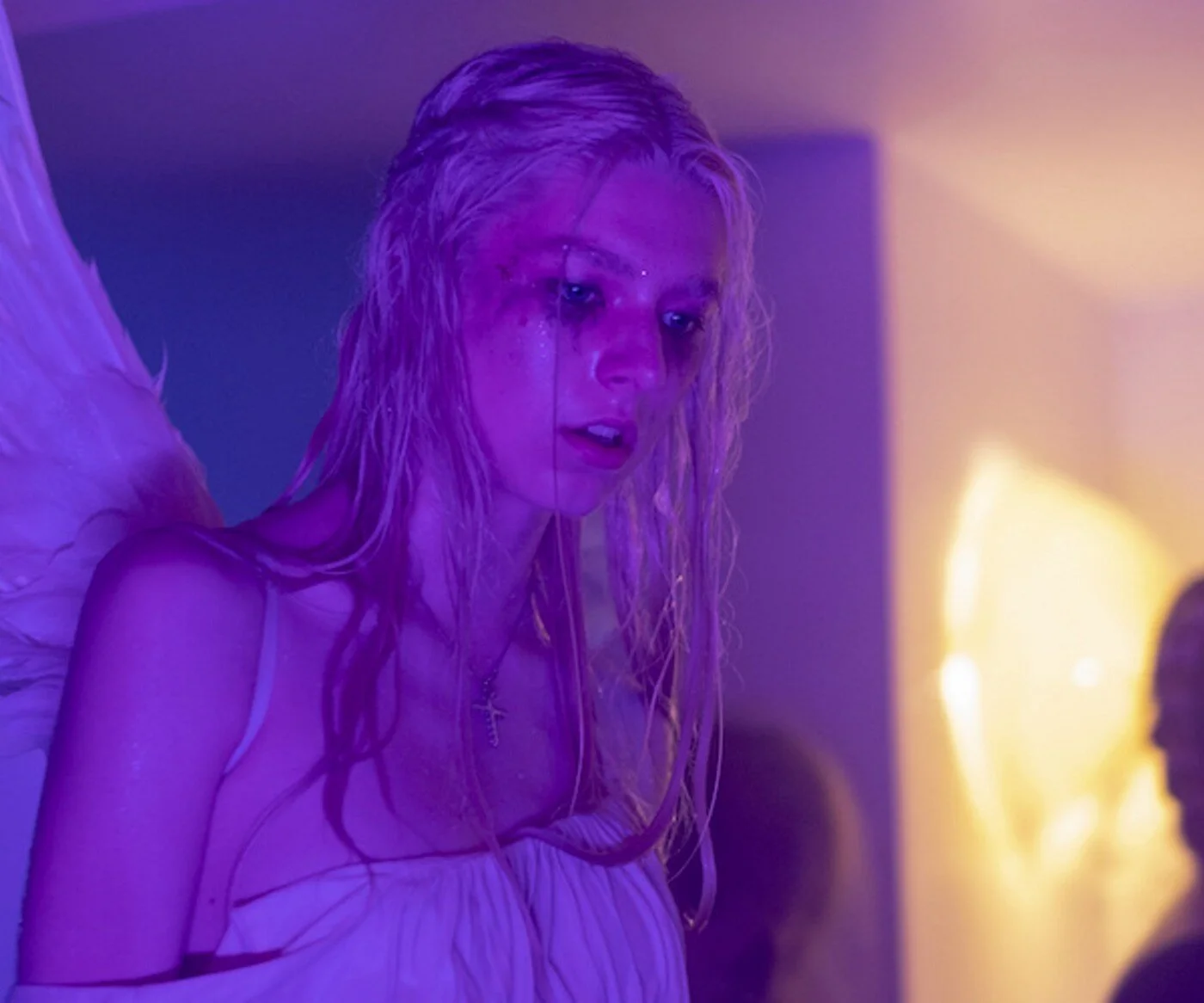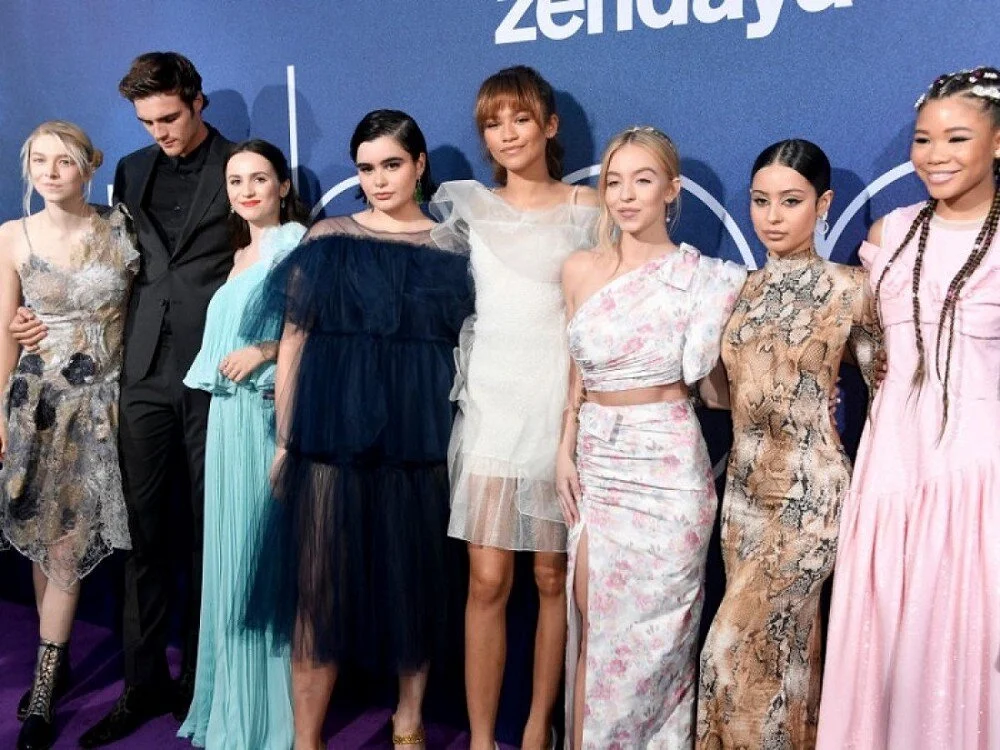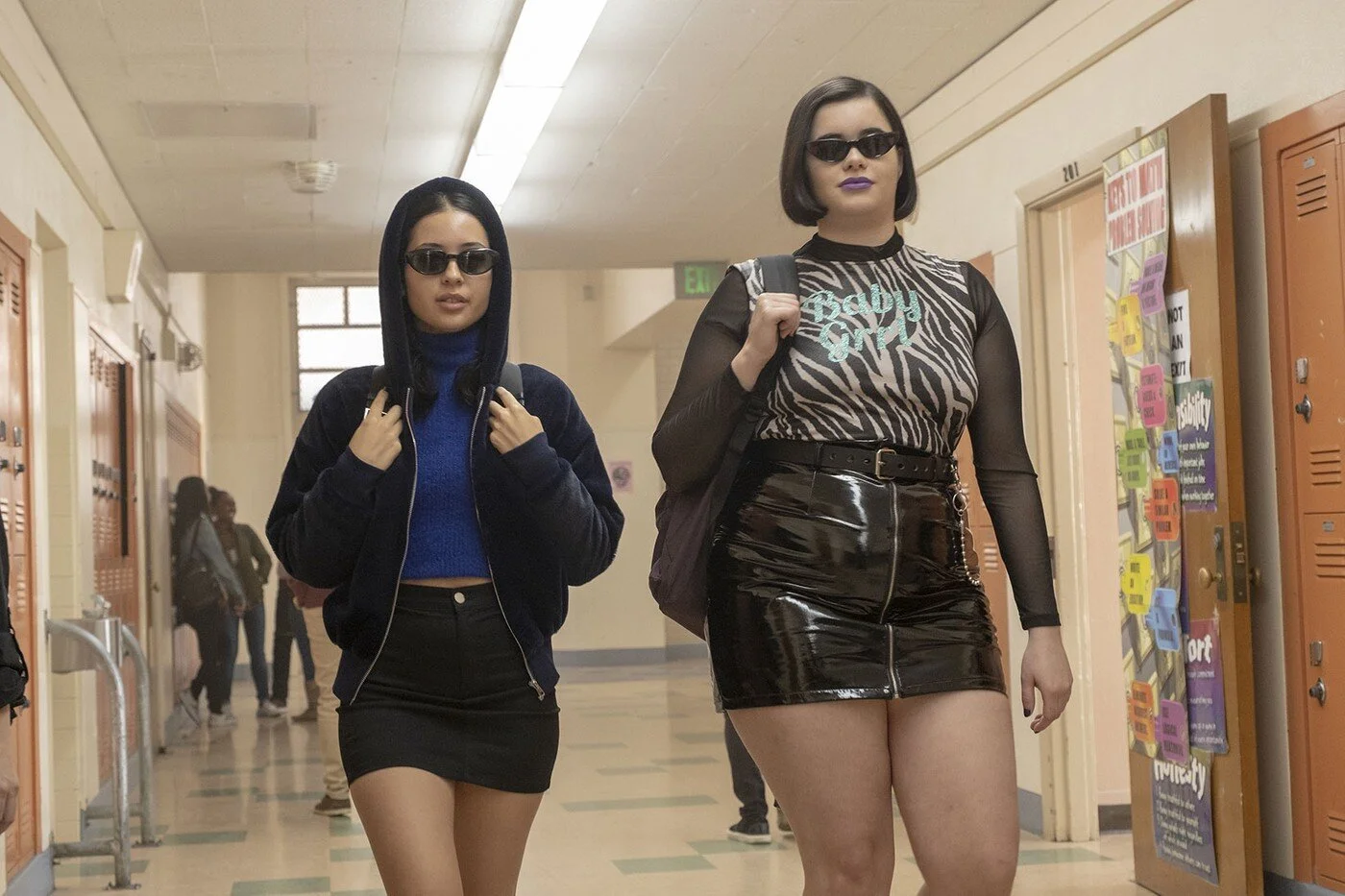How “Euphoria” Revolutionized the Teen Soap Opera
Why it’s the first television show to really depict Generation Z
Zendaya and Hunter Schafer in Euphoria
From Beverly Hills, 90210 to Gossip Girl to Riverdale, the teen soap opera has proven itself to be an extremely successful subgenre in television history. It seems that audiences have always had a fascination with the inner lives of American teenagers — even an extremely narratively and stylistically complex show like Twin Peaks managed to capture the attention of critics and viewers alike with its depictions of youth behaving badly. But premium subscription networks have seemed hesitant to explore the genre; when a network is already able to freely air content that could never be shown on basic cable, is there any need to try to reinvent the teen soap? But with HBO’s Euphoria, the premium cable network scored another huge hit in their already expansive catalogue. With its diverse casting, grittily real storytelling, and built-in fanbase, Euphoria has already turned the subgenre on its head and could become one of the defining programs for Generation Z.
Based on an Israeli miniseries of the same name, Euphoria depicts the lives of several California high school students and their experiences with drugs, alcohol, sexuality, and trauma. While that conceit is nothing new on television, especially in terms of the teen soap opera, Euphoria sets itself apart from similar counterparts by mixing the classic elements of teen dramas with stylish aesthetics usually found in visionary indie films, all while having the narrative free reign allowed to shows on premium cable networks. The show follows Rue (played by Zendaya), a teenager who returns home from rehab after experiencing a near-fatal overdose. Through the course of the show’s first season, Rue struggles to balance her lackadaisical attitude toward sobriety with the ever-present concerns of her family and friends — including Jules, the new girl in town who quickly forms a close relationship with Rue by bonding through shared trauma.
Hunter Schafer in Euphoria
Premiering in June 2019, Euphoria’s first episode initially pulled in modest ratings numbers during the on-air debut. The first episode drew 577,000 viewers when it first aired but continued to attract more views on the network’s streaming channels HBO Go and HBO Now. By the end of the first night’s measurement period, the premiere garnered just under 1 million views. Across the next seven weeks, Euphoria’s numbers remained steady thanks to a huge marketing push and consistent buzz across social media. The first season’s finale hit series-high ratings with 530,000 on-air debut viewers and 1.2 million total first-night viewers with streaming factored in, a 160% jump in HBO Go and HBO Now streaming views from the series premiere night. Euphoria’s consistent numbers can easily be attributed to the substantial fanfare among its target audience on sites like Twitter and Instagram. As the network’s first teen drama, Euphoria is HBO’s youngest-skewing show — viewers ages 18–34 make up 40% of overall viewing and two-thirds of the viewers on HBO’s streaming platforms. With such a large percentage of young viewers, it is no surprise that the show had such a large presence on social media over the summer. Fans of the show were eager to profess their love, regularly using the show’s hashtag while tweeting during new episodes and creating memes that amassed tens of thousands of likes each week. In just one season, Euphoria became HBO’s second-most-tweeted-about show of all time, just behind the behemoth that is Game of Thrones.
From its inception, Euphoria was practically destined to be a success. The series is produced in partnership with A24, arguably the most popular independent distributor in the film industry. A24 has captured the attention of a younger generation of moviegoers by “offering [them] a glimpse at modes of life that are underrepresented, and, as such, incredibly refreshing” with films like Moonlight, Lady Bird, and The Farewell. Fans of A24 are incredibly loyal, always eager to check out the next thing that the distributor — and sometimes studio — is putting out. Euphoria is also executively produced by several notable names, the biggest of which is Drake. By teaming up with a film distributor that “gravitates towards movies…for the personality-driven digital age” and one of the most famous people on the planet, HBO essentially created a series that already had a built-in audience before the first episode ever aired. For a premium cable network that has a long history of using unprecedented techniques to attract audiences, this calculated move comes as no surprise. In her book The Television Will Be Revolutionized, author Amanda Lotz declared that HBO “defied broadcast norms by airing consecutive new episodes of a program over twelve to eighteen weeks and then left audiences without new episodes for as long as twenty-one months.” Lotz attributes HBO’s ability to reassemble audiences to the “exceptional differentiation in quality” of their programming compared to other networks.
Some of the main cast of Euphoria
There is a stark contrast between Euphoria’s 8-episode first season and the season lengths of teen soaps on network television. Most mainstream network shows that are targeted towards younger audiences often run upwards of twenty episodes per season. To combat an 18-episode first season that was shortened due to the 2008 Writer’s Guild of America strike, the second season of Gossip Girl capitalized on the show’s mega popularity by producing a whopping 25 hour-long episodes. By the end of that season, the writers had been through so many plotlines that there was a clear level of narrative fatigue when the third season began airing just a few months later. A smaller episode order ironically allows Euphoria’s characters to feel even more fully realized. Unlike similar teen dramas on network television, characters arcs are not driven by writers padding storylines to fill nine months out of a calendar year. The plots also feel believable because HBO was intent on telling the story correctly. The show has a long list of consultants on hand to confer with writers to inform the authenticity of a screenplay. For a show with several actors who are people of color, trans, and queer, this commitment to making characters believable is extremely admirable, and Euphoria’s diversity unquestionably contributes to its popularity. Viewers are happy to see accurate versions of themselves portrayed in a teen soap instead of the lily-white casts and singular half-baked queer characters found in other shows like Riverdale or Pretty Little Liars. Both Euphoria’s richly-written characters and concise episode order allow for a complex viewing experience that is quite unlike any other teenage soap opera to air before.
In his book, Narrative Complexity in Contemporary American Television, author Jason Mittell discusses the different types of narrative characteristics found in both simple and complex television narratives, and Euphoria aligns with many of Mittell’s principles of complex television in each episode. Rue narrates the events of the series with a sardonic wit that often blurs the line between the diegetic and non-diegetic — it permeates each episode and begins from the opening scene: an analepsis that is dedicated to expanding the backstory of a different character each episode. Rue’s narration seems omniscient, as there is no indication that she could know so much about each character’s early lives. The complex narration and the extended opening flashbacks enhance the depth of each character, making fictional people who could easily come off as tokens or tropes into fully realized, three-dimensional characters. Mittell cites these innovative storytelling strategies of benchmarks of complex television narratives. Euphoria also follows no formulaic structure for its episodes. For instance, one week could be a bottle episode taking place in one location for the entire runtime while another could revolve around what’s happening while Rue falls into a deep depression, following what each character is doing while Rue lays in her bed binge-watching Love Island. The show also rejects the idea of narrative closure, both at the end of each episode and the end of the first season.
Alexa Demie and Barbie Ferreira in Euphoria
But Euphoria is not only narratively complex but stylistically as well. The show makes use of both existing locations and built sets on the Sony Studios lot. Soft neon lights are used to illuminate the scenes that take place at night, and many characters sport gorgeous makeup looks that have inspired a multitude of Euphoria makeup tutorials on YouTube. The show’s unrivaled narrative and visual styles come together with extraordinary results in episode 1x04, “Shook Ones, Pt. II.” The episode begins with the weekly analepsis narrated by Rue. In this episode, the audience learns the backstory of Rue’s curious new friend Jules, who was institutionalized during adolescence by her mother after Jules’ parents begin to suspect that she’s trans. After a suicide attempt, Jules goes to live with her father and begins living her life openly. In the present day, a bottle episode begins, and all the storylines and character arcs that had been on the verge of crossing for three weeks prior crash together at the high school’s annual fundraising carnival. This is when Euphoria flexes its ability to showcase both substance and style. Rue struggles to maintain her sobriety after confessing her feelings for Jules all while other characters clash around her. Each person is moving around the same space but living out completely different personal events. Subtly unnerving electronic beats (courtesy of musician Labrinth) score each scene, conveying an undertone of urgency to the whole episode. Sweeping shots fly over brightly lit Ferris wheels, carousels blur the vision of anything out of the camera line, and neon-colored fog rolls between the carnival rides, suggesting trouble lurking just around every corner. It’s a grand exercise in television construction and the perfect episode to convey Euphoria’s take on the classic conceit of the teenage soap: it’s captivating to watch beautiful people behaving badly.
But Euphoria is not only narratively complex but stylistically as well. The show makes use of both existing locations and built sets on the Sony Studios lot. Soft neon lights are used to illuminate the scenes that take place at night, and many characters sport gorgeous makeup looks that have inspired a multitude of Euphoria makeup tutorials on YouTube. The show’s unrivaled narrative and visual styles come together with extraordinary results in episode 1x04, “Shook Ones, Pt. II.” The episode begins with the weekly analepsis narrated by Rue. In this episode, the audience learns the backstory of Rue’s curious new friend Jules, who was institutionalized during adolescence by her mother after Jules’ parents begin to suspect that she’s trans. After a suicide attempt, Jules goes to live with her father and begins living her life openly. In the present day, a bottle episode begins, and all the storylines and character arcs that had been on the verge of crossing for three weeks prior crash together at the high school’s annual fundraising carnival. This is when Euphoria flexes its ability to showcase both substance and style. Rue struggles to maintain her sobriety after confessing her feelings for Jules all while other characters clash around her. Each person is moving around the same space but living out completely different personal events. Subtly unnerving electronic beats (courtesy of musician Labrinth) score each scene, conveying an undertone of urgency to the whole episode. Sweeping shots fly over brightly lit Ferris wheels, carousels blur the vision of anything out of the camera line, and neon-colored fog rolls between the carnival rides, suggesting trouble lurking just around every corner. It’s a grand exercise in television construction and the perfect episode to convey Euphoria’s take on the classic conceit of the teenage soap: it’s captivating to watch beautiful people behaving badly.
Zendaya as Rue in Euphoria episode 1x04
Critics seem to feel the same way. Euphoria currently holds an average score of 68 on Metacritic with generally favorable reviews. While some critics were perturbed by the show’s more graphic scenes, almost all of them noted that the show’s quiet moments make it feel more emotionally impactful than most of its kind. Each review also mentions the show’s striking visual style, though some believed that the beauty was too harshly contrasted by the gritty, audacious storylines. In an interview with Entertainment Weekly, the show’s creator Sam Levinson — who based the show partially on his own experiences — told the magazine that his hope in creating the show is that it “opens up a dialogue…because it’s hard being a teenager…especially too if you’re struggling with addiction.”
Like many other teenage soap operas before it, Euphoria makes parents scared and teens engrossed. But unlike the Gossip Girls and 90210s of the past, the show seeks to transcend the typical soap opera glamorization of sex and drugs. It may depict bad behavior, but it’s a nature that exists in the world today. Things aren’t brushed off — episodes don’t tie up mini-plotlines just so characters can continue to make bad decisions with no consequences. Euphoria is interested in accurately viewing the world teenagers live in today, just through an effectively stylish visual aesthetic. It’s a narratively complex drama with one of the most excitingly diverse casts on television that is not afraid to go to the hilt. Generation Z was born in the shadow of a national tragedy, an unprecedented ordeal that strained the world and seeped into the trauma of their own lives. A show like Euphoria is the first real portrait of that — and it’s more relevant now than ever.





